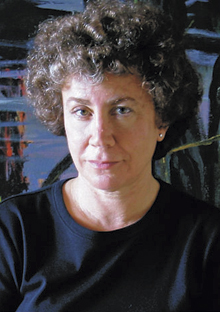Summer Reading Special: A Conversation with Jill Ciment

Photo: Arnold Mesches
In her earlier novels, Jill Ciment conjured up characters ranging from a self-tattooing artist to a snake oil saleswoman. Her newest novel, Heroic Measures, set in New York right after 9/11, centers on a sweet elderly couple—and their dachshund—as they try to find a new home. O called Jill in Brooklyn, where she is just about to buy a new apartment, and discovered how her experience with New York real estate, canine cohabitation ("People are never dog owners since the dogs own us," she says), and one missing cat inspired a novel our reviewers praised for "its painterly depictions of a rattled city ... and its tender knowledge of the creaturely ties that bind."
O: Oprah.com member Joan wants to know how you so aptly captured the emotions of this couple in the twilight of their lives. What inspired you to create Ruth and Alex?Jill: Alex is based on my husband, Arnold, who is an artist. The project that Alex is working on in Heroic Measures is exactly what Arnold did with his own FBI files; he used them to create an exhibit that appeared in the Brooklyn Museum. But, other pieces of Ruth and Alex came from stalwart New Yorkers I knew when I lived in the East Village; they never really left the city and truly believed it to be one of the places where an intellectual life is possible. Then, as they aged, they found themselves priced out, lost.
O: Why did you place them in this time period—the months after 9/11?
Jill: It started with a "Lost Cat" poster I saw on a telephone pole within a few days of when the buildings came down. In the weeks that followed, people were still hopeful that their missing loved ones might be wandering the streets, and missing persons posters with pictures went up. At first, nobody covered up the lost cat. Then, they ran out of room. People broke down, and the cat was gone. I thought to myself, "This is an amazing story—not just how the tragedy affected humans, but all the living creatures in Manhattan."
O: Ruth tells us the name of the first section, "The Lady with the Pet Dog" is a line from a [Anton] Chekhov story, and she references his writing throughout the novel. What does a 19th-century Russian writer have to do with this story?
Jill: Chekhov is able to do this extraordinary thing that only fiction writers can do—he gives us access to another person's consciousness. Fiction is the only art in which you can really spy on the way a person thinks, and Chekhov is the most humane of all writers. That's what I strive to do. I want to write books that allow other people to see that basically the human character is tricky and selfish, but also really compassionate and highly complex.
O: And you also wanted them to be able to spy on the inner workings of a dog... How did you get inside little Dorothy's head?
Jill: When I first wrote from Dorothy's perspective—and this is true of all my characters—I didn't know who she was. I call it the Jane Goodall writing process. My first draft, I'm in a jungle, it's hot and I'm terrified, following these beasts around just writing down everything that they do. Then, my second draft is I go back to the shack, I take a shower, but I'm still wigged out because it's the jungle. ... But I start to think about motivation. I basically ask, "Why did one chimpanzee hit the other chimpanzee over the head?" After that, I put the book away. My third draft exists back at home. I have electricity, I'm relaxed, and I'm looking back as if I'm an old lady and retelling this story of what the chimpanzees did.
So, that's how I invented not just the two main characters but Dorothy too. At first they start off as blank names doing things, and it takes two, three, drafts before they become imbued with what is highly idiosyncratic human—and dog—personalities.



